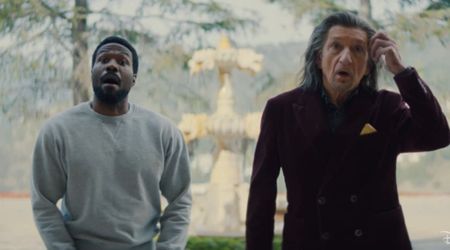‘Vikings’ Season 6: Fans doubt if King Oleg’s story matches real historical facts

When it comes to historical epics, there are always some plot points, which are fictionalized to make it more entertaining and dramatic. But the core characters are essentially real. The one in question here is Prince Oleg of Kievan Rus and if his character is real. Yes, it is sometimes hard to believe that these powerful people, glamorously portrayed, could actually have existed a millennium ago. Because, as we said, there are certain cinematic/production elements tend to go askew from the real facts, when we watch the fictional version on screen.
As a fan, @nordenhelm has a serious doubt. He thinks that “The main thing they did wrong is that prince Oleg never been Christian, he was pagan. Also, why do Russian warriors look like Mongols and why they have Mongol armors? The story takes place centuries before the Mongol invasion of Kievan Rus. #Vikings #Vikings6.”
So, his question remains if Prince Oleg did really rule Kievan Rus and what we see have any relevance to the historical facts.
Here’s what history says and we corroborate the facts with our research.
It so happened that some Scandinavian Vikings, Varangians, expanded their territories to Eastern Europe in the mid 9th century. For about four centuries thereafter, they had controls on parts of Russia, Belarus and Ukraine, with their most prominent leader being Prince Oleg the Prophet. In the Viking age, ‘Russia’ did not exist and the entire region was known as Kievan Rus, until the mid-13th century.
Now, technically, Oleg was a Viking by birth and a pagan, as @nordenhelm claims. He might or might not have been converted to Christianity (since there are not documented evidence). But his character is very much real. Between 880 and 882, Oleg overthrew Prince Askold of Kiev and made Kiev the new capital of the Russian empire. And thus his kingdom came to be known as Kievan Rus.
You would be surprised to know that Prince Oleg was active between 879 and 912 and was succeeded by his nephew Prince Igor (which we also see in Season 6 of ‘Vikings’). However, there is definitely a change in fact of Igor in the show versus the real Igor. As opposed to what we saw in the earlier episodes of ‘Vikings’ Season 6, Oleg succeeded (legitimately so) Rurik, in 879 and then he was succeeded by Rurik’s son Igor when he came of age in 912.
But wait, there’s more! Did you know Oleg was also the Russian king who attacked Constantinople?
Eventually, in the mid 13th century (around 1240s) the Mongols invaded Kievan Rus. Now, why do Oleg’s army in the TV show look like Mongol warriors might be a legit question to address! Again, we would like to believe that since there is no recorded history of exactly how the Varangians blended their culture with the early Russians, we can take it as a cinematic rendition of real facts.
So, the plots and schemes and the drama that unfolds between Oleg, Dir, Igor, and Ivar the Boneless, well, let’s just call it creative liberty and Michael Hirst’s ingenuity of storytelling. Or would the show be as interesting and thrilling as we see it?
‘Vikings’ Season 6 is currently on a holiday break and will be back on January 1, 2020, at 10 pm/9c, only on History Channel.










